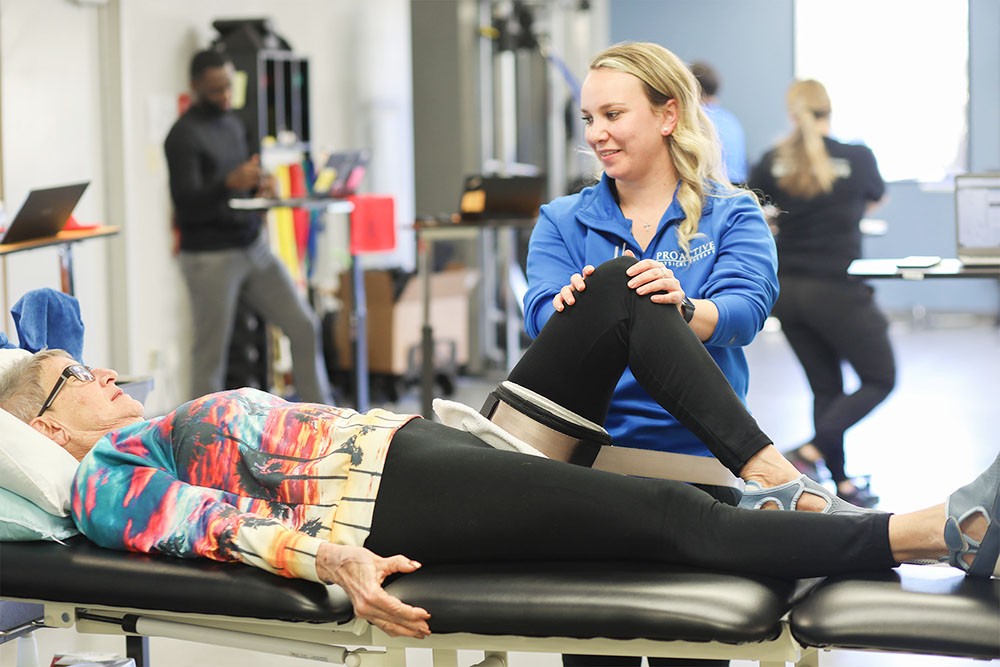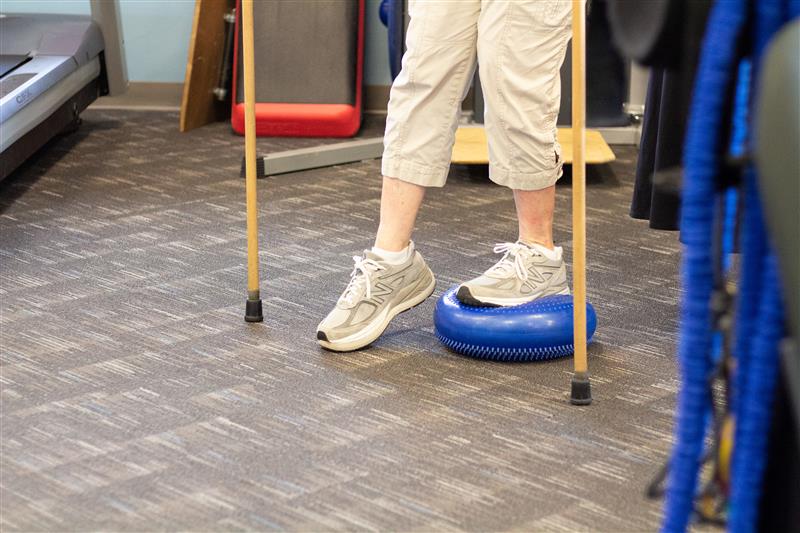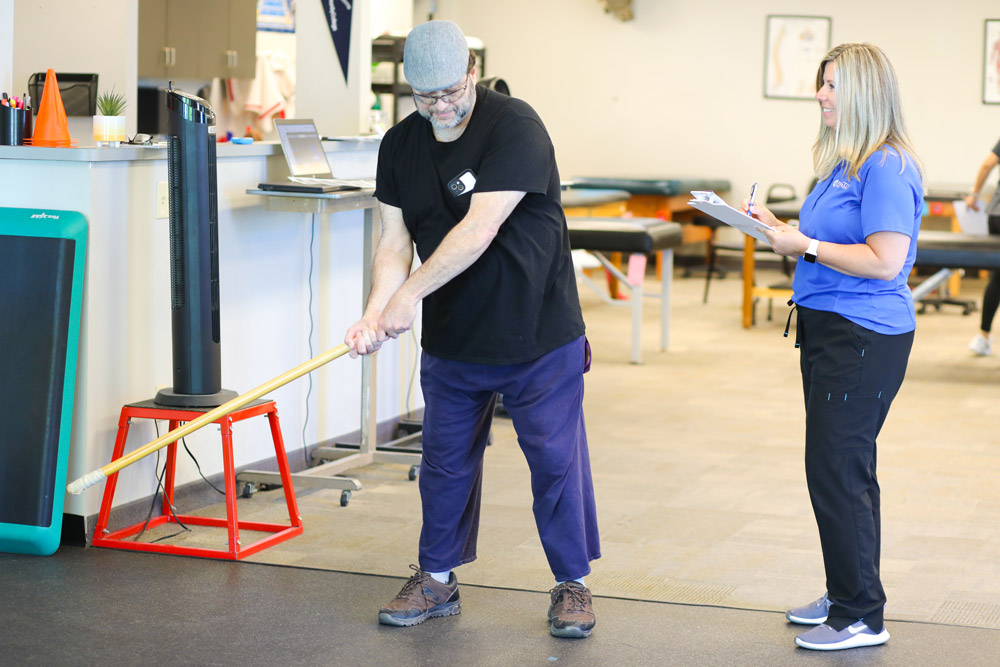Hip impingement occurs when surrounding tissues squeeze the hip joint. The hip joint consists of three bones:
- The femur (or thighbone)
- The acetabulum (pelvic socket)
- The pubic symphysis (connecting cartilage between two bones)
The femoral head (ball) and acetabulum can be pinched between the femur and pelvis when your hip rotates out of its normal range during activities like running, squatting, or getting up from a chair or bed.
Hip impingements often occur when the labrum — a ring of cartilage that lines the socket — tears or becomes irritated due to overuse. Sometimes, this happens after an injury, such as falling on an outstretched hand while playing sports, but it may also occur without an apparent cause if you have arthritis in your hips.
The condition most commonly affects middle-aged or older people who engage in strenuous physical activity. In addition, osteoarthritis, rheumatoid arthritis, or other conditions that affect the joints may be more likely to develop hip impingement. It’s also more common in overweight people with weak glutes (buttocks), who have had previous surgery on their hips or participate in activities like biking or swimming requiring repetitive movement.
What Does a Hip Impingement Feel Like?
You may feel pain when walking uphill, running, squatting down, getting up from a chair or bed, or twisting at your waist. The pain can be described as dull or sharp and may feel like a cramp in your hip or thigh. You might notice swelling in or around the joint, numbness or tingling in your leg, and weakness due to nerve damage caused by poor circulation around the hip joint. If you’re experiencing pain in your hip, consult a doctor. You may have an underlying condition that needs treatment.
What Causes Hip Impingement?
There are several causes of hip impingement. Some of the most common include:
- Tight hip flexors (the muscles that run along the front of your hips and thighs)
- Weak core muscles (your abs and back)
- An imbalance between the quadriceps and glute muscles
- A rotated pelvis
- Too much sitting—especially on hard surfaces. Over time, this can injure your hips and cause them to become weak. For example, sitting for long periods each day and getting up every hour to walk around or stretch will keep blood flowing through your body while reducing muscle stiffness in your hips. You may also want to consider investing in an ergonomic chair with good lumbar support to sit comfortably without strain on any area of your body for too long!
- A poor posture
- Weak glutes (your butt muscles)
What Are the Symptoms of Hip Impingement?
The most common symptoms of hip impingement include pain in your groin or upper thigh when you bend forward at the waist, lift something heavy off the floor with one leg, or rotate your ankle outward while standing on one foot. You may also feel pain when bending sideways at the waist, squatting down with straight legs, or lying on your side with knees leaned toward your chest.
Pain when sitting is another symptom of hip impingement. Sitting puts pressure on the front part of the hip joint and can irritate it even more.
Pain when sleeping on the affected side indicates a problem with this area since sleeping puts pressure on it and can irritate it further. The same goes for bending or twisting this area while getting dressed or performing other activities requiring movement around your body region.
How Do You Diagnose Hip Impingement?
You can diagnose hip impairment by seeing a doctor and having them perform a physical examination. The physician will perform a physical exam to check for instability, pain, and muscle weakness in the hip region. X-rays are typically not used to diagnose hip impingement because they are unable to show if there is any damage or inflammation in the area.
Physicians may, however, use MRI and CT scans to determine if there is any other condition, such as arthritis or labral tears, that could cause symptoms similar to those of hip impingement.
Is a Labral Tear the Same as a Hip Impingement?
Some people confuse labral tears with hip impingements. Both are common causes of hip pain. Labral tears can occur in the hip and knee, though most commonly associated with the hip joint. A labral tear is an injury to a ligament or cartilage that cushions the head of your femur (thigh bone) in your acetabulum (hip socket). If you have a labral tear, you may experience one or more symptoms similar to those of hip impingement:
- Pain when lying on your side
- Sharp pain with specific movements like squatting or lifting something heavy
- Tingling in the groin area
However, a labral tear can cause more persistent pain and muscle weakness and may lead to the development of femoral acetabular impingement (FAI) or hip impingement.
How Do I Treat Hip Impingement?
Treatment for hip impingement will vary based on the severity of your condition. Physical therapy is the most effective hip impingement treatment that your doctor may recommend, alongside enough rest if you suffer from mild symptoms. In addition, you can take part in PT for hip impingement through exercises or manual therapy. Physical therapy aims to help you manage your pain and improve mobility so you can return to daily activities without discomfort.
Your physician may also suggest using anti-inflammatory medications and pain relievers to help with discomfort while your body heals. You may need surgery to repair the damage if your symptoms are more severe. The surgery will depend on what’s causing the problem in your hip joint. Your doctor may recommend the following:
- A labral repair or reconstruction. This type of surgery repairs damaged cartilage around the hip socket.
- Acetabular impingement resection (AIRE): This is a procedure in which surgeons remove damaged tissue from inside your hip joint.
- A total hip replacement: This surgery replaces the damaged joint with a metal or ceramic implant. In some cases, surgeons may recommend undergoing an artificial hip replacement procedure if your symptoms worsen despite non-surgical treatment options.
- A hip resurfacing: This procedure replaces the damaged ball and socket with a metal cap.
- Hip arthroscopy: This minimally invasive procedure uses small surgical tools and cameras to treat injuries inside your hip joint.
Home Exercises for Hip Impingement
You can perform these exercises at home to help relieve pain and improve mobility.
Stretching your hip flexors, quadriceps, hamstrings, and glutes
- Make sure you’re standing properly and your feet are hip-width apart.
- Put one hand on a wall or chair for support if necessary.
- Bend forward at the hips until you feel a stretch in the front of your thigh (quadriceps).
- Hold for 30 seconds.
- Repeat on the other side.
- Make sure to stretch both sides evenly so that one doesn’t become more flexible than the other!
Hip Abduction
This strengthening exercise helps improve your range of motion and reduce pain in your hip joint.
- Lie on your side with both legs straight out behind you. Strengthen your top leg and lift it until it is perpendicular to the floor.
- Hold for 30 seconds and repeat ten times.
- To make it easier, start with your knees bent.
- Once you can do ten repetitions without pain, straighten your legs and begin doing them one leg at a time.
This exercise will help strengthen the muscles in your hip that support the joint while allowing you to increase your range of motion.
Muscle Energy Techniques (MET) for Hip Flexors
This manual technique and exercise help increase the range of motion and reduce hip pain. It can be done independently or with a partner or therapist.
- Lie on your back with the affected hip flexed to 90 degrees.
- The patient or therapist applies force on the top of the thigh to resist active hip flexion, and the patient completely resists the force for an isometric contraction of hip flexors.
- Hold the isometric contraction for 6-10 seconds.
- After 6-10 seconds of isometric hold, completely relax the leg and exhale.
- Passively stretch the leg to greater hip flexion and hold for 30 seconds.
- The procedure is repeated between 3-5 times
The result of the exercise should be a greater range of motion in the hip.
Calf Raises
This exercise will strengthen the muscles in your calves and improve endurance.
- Stand with your feet shoulder-width apart and place your hands on a chair or wall for balance.
- Slowly rise onto your toes as high as possible without bending at the knee. Hold that position for a few seconds, then slowly lower yourself.
- Repeat ten times.
- Once you can do ten repetitions without pain, increase the number of repetitions by one and continue until you reach 30.
Plank Exercises
This exercise will strengthen your core muscles and improve posture.
- Lie face down on the ground with your hands on either side of your chest and your legs extended straight behind you.
- Keep your back straight, with your head looking down at the ground.
- Hold this position for as long as possible, working up to 60 seconds.
- Once you can do 60 seconds without pain, increase the time by five more seconds and continue until you reach two minutes of total time on this exercise.
Conclusion
Hip impingement is a common cause of hip pain when too much pressure builds up between the head of the femur (thigh bone) rubs and the acetabulum (hip socket). This can cause a grinding sensation, potentially leading to arthritis if left untreated. The impingement can be due to several factors, including trauma to the hip or arthritis in the joint. However, hip impingements can be treated with PT and at-home exercises to help alleviate pain and reduce the risk of arthritis.
If you are experiencing hip pain, you must see a PT for evaluation. By closely examining your hips, they can determine your impingement and develop an exercise program to treat your condition. Request an appointment with ProActive Physical Therapy today to get started on your path to pain-free movement.








